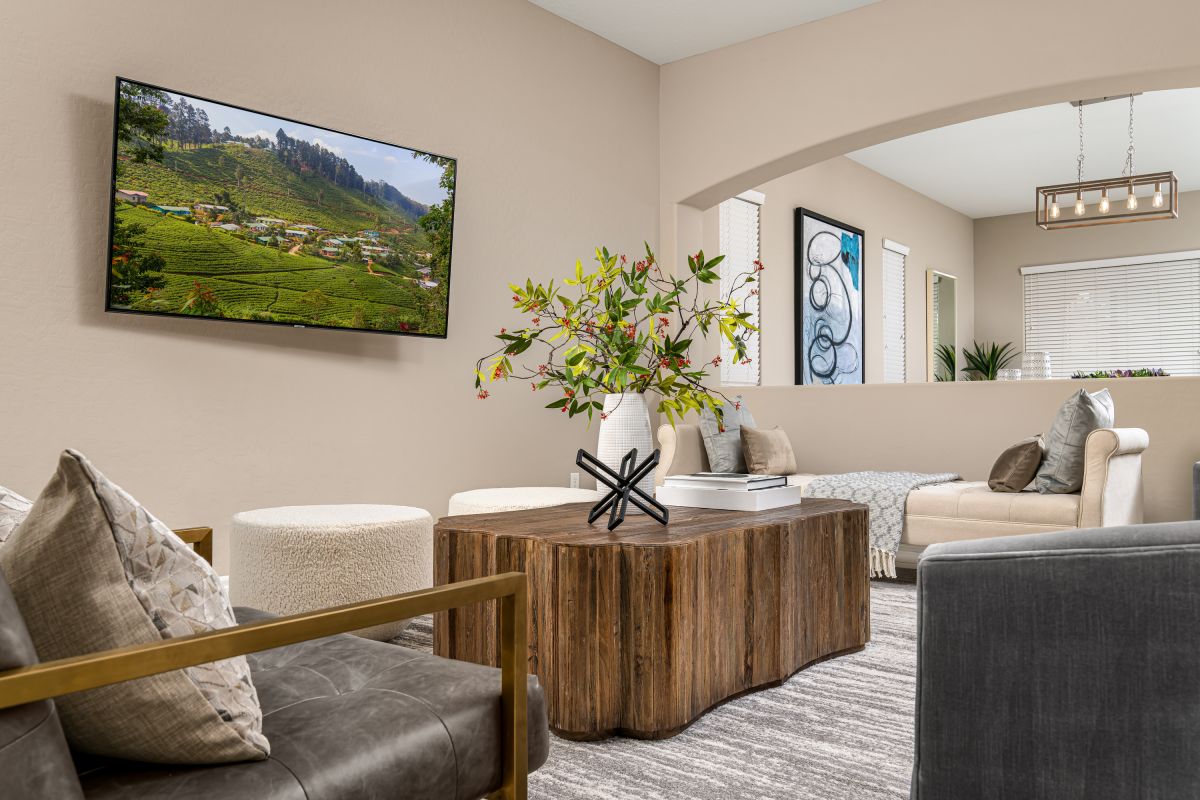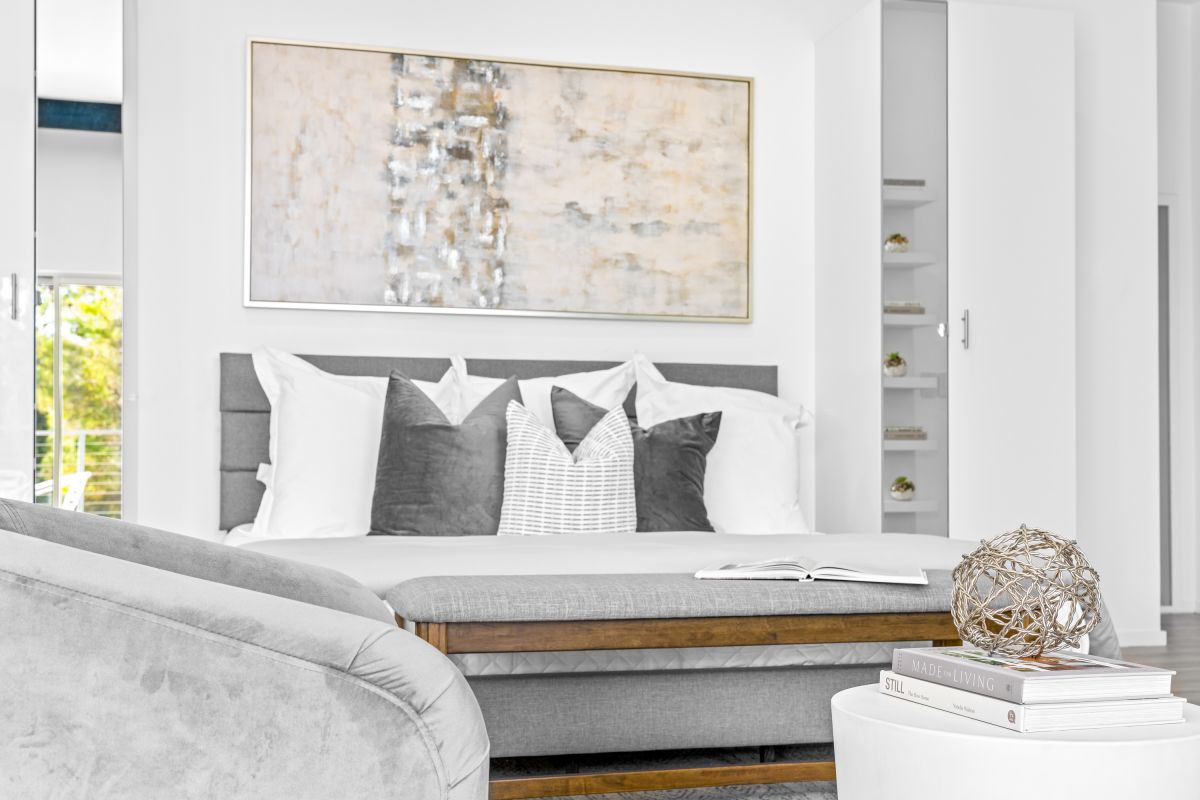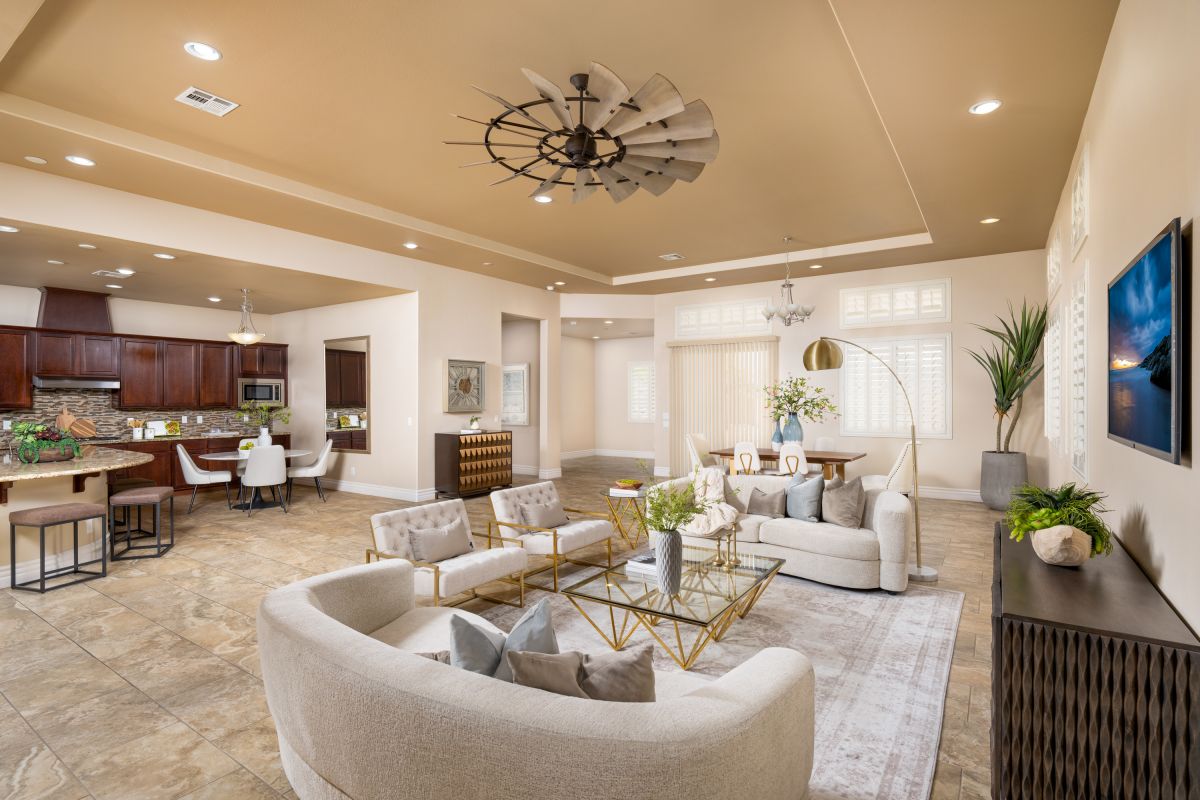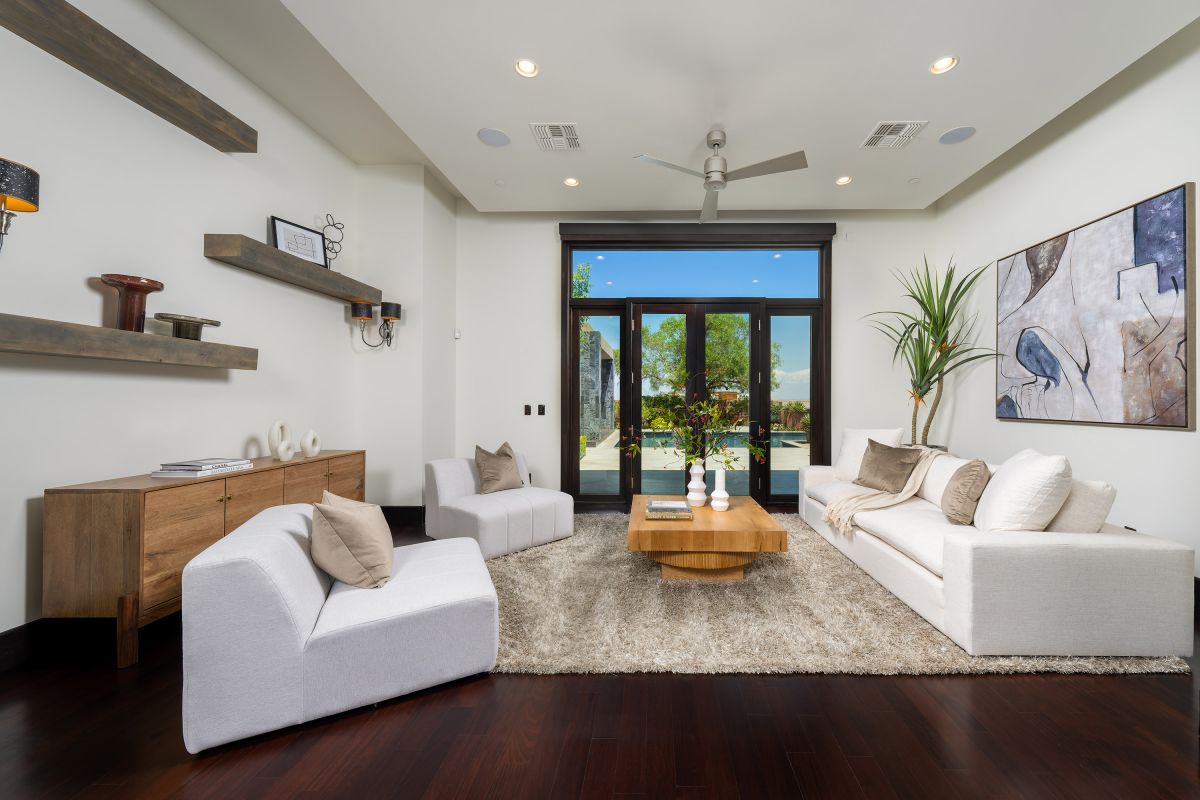Reinventing Spaces: Unleashing the Power of Texture in Interior Design 🎨🏠
Once upon a time, I stepped into a room that was decorated entirely in shades of cream. Sounds a bit monotonous, doesn't it? But to my surprise, the space was far from boring. Why? The answer lies in the masterful manipulation of an often overlooked element in interior design – texture. 🌟
Despite the uniform color scheme, the room was teeming with life and interest. The woolly throw draped across the sleek leather couch, the rustic wooden table sitting alongside a silky, patterned rug, the roughly hewn stone wall contrasting the smooth sheen of metallic accents. Every object, though sharing the same hue, told a distinct story through its unique texture, contributing to a rich tapestry of sensory experiences.
This personal encounter led me to the realization of texture's transformative potential in interior design. It's not just about what we see, but also what we feel. When skillfully employed, texture can inject depth, intrigue, and harmony into a space, transforming the mundane into the magnificent. 🌈
In the world of interior design, texture is the surface quality of an object. It could be the graininess of a wooden table, the plush comfort of a velvet armchair, the cool sleekness of marble countertops, or even the visual rhythm of a geometric-patterned wallpaper. Each texture communicates with us, evoking emotions and subtly guiding our experiences within the space.
In this extensive guide, we'll explore the compelling world of texture. From understanding different types of textures and their emotional underpinnings to examining their pivotal role in various design styles, we'll delve deep into this exciting design element. We'll also navigate the sea of practical tips for effectively incorporating texture into your spaces and identify common mistakes to avoid. By the end, you'll be equipped with the knowledge to harness the power of texture, creating captivating interior spaces that truly resonate with the inhabitants.
So, let's embark on this textural journey, one that's bound to redefine your understanding and appreciation of interior design. 🚀
🌟 The Importance of Texture in Interior Design 🌟
The phrase, "it's the little things that matter," couldn't ring truer in the realm of interior design. While we often focus on color, form, and light, texture—an equally crucial component—tends to be an afterthought. However, this subtle element has the power to dramatically enhance the aesthetic appeal of a space, making it more inviting and visually interesting. 🎈
Texture, in the context of interior design, pertains to the surface quality of an object. It engages our sense of touch, encouraging us to reach out and feel our surroundings. However, texture isn't just about tactile sensations—it also influences our visual perception, adding depth and dimension to our spaces. 🏡
As renowned interior designer Kelly Hoppen once said, "Texture is often overlooked, but it brings an essential depth and sensuality to a room." It's the secret ingredient that imparts a certain 'je ne sais quoi' to the room, dictating its mood and energy.
Think about how the plush comfort of a velvet sofa, or the cool sleekness of marble countertops, makes you feel. Or how a weathered wooden table or a fluffy area rug adds layers of visual interest to a room. These textures, both tactile and visual, create a multisensory experience that deeply influences our emotional response to a space. 🌈
For instance, a room adorned with smooth and glossy textures often exudes a modern, sophisticated vibe, while one filled with rough, natural textures can create a rustic, cozy ambiance. By skillfully manipulating texture, you can turn a flat, uninteresting space into a rich, engaging setting that tells a compelling story.
"Texture is the final touch in design," says New York-based interior designer Miles Redd. "It is the icing on the cake, offering that depth and layer of interest." By integrating various textures, we can create balance and contrast, giving the room a sense of harmony and completeness.
A striking example of texture's transformative power can be seen in monochromatic designs. With color out of the equation, texture steps up, adding complexity and life to the space. The contrast between a soft knitted throw, a sleek metal table, and a rough brick wall in a grayscale room can create an unexpected dynamic, making the room pop despite the lack of color.
As we journey deeper into the enchanting world of texture, you'll discover the endless possibilities this underestimated element offers. It's time to appreciate texture for what it truly is – a powerful tool in shaping beautiful, emotive spaces. 🚀
🌿 Exploring Different Types of Texture 🌿
In the mesmerizing world of interior design, there are countless textures to choose from. Each brings its own unique character to the mix, offering unlimited possibilities for creating visually and sensually delightful spaces. Let's explore the various types of textures and how they contribute to a design. 👀
Natural Textures 🍂
Nature is the original artist, crafting textures that inspire warmth, authenticity, and a sense of comfort. Natural textures include the likes of wood, stone, cotton, and wool.
Imagine running your hand over a rustic wooden table, feeling the grain and the rough edges, or sinking your feet into a plush woolen rug, experiencing the soft, comforting embrace. Or visualize a living room adorned with a stone fireplace, the rugged texture adding an element of raw, organic beauty. Natural textures bring us closer to the earth, grounding our designs with their inherent warmth and charm.
Manufactured Textures 🏭
Human ingenuity gives rise to manufactured textures—those that result from our creative and technological interventions. Think polished concrete floors with their cool smoothness underfoot, or synthetic fabrics with their durable and versatile beauty.
Consider the chic urbanity of a stainless steel kitchen island, or the intricate pattern of a geometric wallpaper. Such manufactured textures offer a broad spectrum of design possibilities, allowing us to create spaces that are modern, futuristic, or industrial in feel.
Visual and Tactile Textures 👀✋
While tactile textures are those we can physically touch and feel, visual textures appeal to our sense of sight. The interplay between these two types can significantly enrich a room's ambiance.
For instance, a soft velvet sofa not only offers a plush tactile experience but also presents a rich visual texture that catches the light. Similarly, a wallpaper with a raised pattern can trick the eye into perceiving a tactile texture, adding depth and intrigue to a flat wall.
A great real-world example of this can be seen in the iconic designs of the Ace Hotel in New York. The hotel masterfully blends natural textures like exposed brick and reclaimed wood with manufactured elements like steel fixtures and leather upholstery. Visual textures, like the chalkboard-style murals, add another layer of interest, creating a rich, multi-sensory environment that's modern yet warm.
As we explore different types of textures, it's crucial to remember that balance is key. Overwhelming a space with too many textures can make it feel chaotic, while not including enough can leave it feeling flat and uninteresting.
Texture, in its many forms, offers us the opportunity to transform spaces in subtle yet profound ways. By appreciating and understanding the different types of textures at our disposal, we're equipped to create environments that are both visually captivating and emotionally resonant.
🎆 The Power of Texture in Interior Design 🎆
As we've learned, texture in interior design extends beyond mere tactile sensations. It's a potent tool that, when wielded with intention and creativity, can breathe life into our spaces. Let's further explore the transformative power of texture in creating depth, interest, balance, contrast, and atmosphere in a room. 🌈
Depth and Interest 🌠
Like an artist adding shading to a drawing to make it leap off the page, designers use texture to give a room depth and dimension. By introducing different textures, we can create visual interest and keep the eye engaged.
Imagine a bedroom with smooth satin sheets, a fluffy faux fur throw, a sleek wooden bed frame, and a shaggy rug. Each texture interacts differently with light, creating a variety of shadows and highlights that make the room visually dynamic. The interplay of these textures not only creates depth but also captivates the viewer's interest, making the room feel more inviting.
Balance and Contrast ⚖️
Striking the right balance and contrast is essential in interior design, and texture is a key player in this regard. The juxtaposition of different textures can create a pleasing contrast that adds balance to the room.
Consider a living room with a rough, exposed brick wall softened by a plush velvet sofa and complemented by a smooth, glossy coffee table. The roughness of the brick, the softness of the sofa, and the sleekness of the table contrast with each other, yet they work together to create a harmonious balance. This balance can make the room feel more comfortable and cohesive.
Atmosphere Creation 🌟
Textures also have a profound impact on the mood and atmosphere of a room. They can make a space feel cozy and inviting, sleek and sophisticated, or anywhere in between.
Rough, natural textures like wool, wood, and stone can lend a room a warm, cozy, rustic ambiance. In contrast, smooth, sleek textures like glass, steel, and polished concrete can give a space a modern, chic, industrial vibe. The right combination of textures can help you create any atmosphere you desire, evoking a specific mood and feeling.
An excellent example of this is the cozy atmosphere created in the lobby of the Hoxton Hotel in Paris. The combination of rugged wooden floors, sleek leather sofas, and soft, plush rugs creates a space that feels cozy and welcoming despite its grand size.
Texture is truly a potent tool in interior design, capable of transforming the way a space looks and feels. By understanding and skillfully using texture, we can create spaces that engage our senses, stir our emotions, and simply make us feel good. 🚀
🖼️ Incorporating Texture in Various Interior Design Styles 🖼️
Texture, with its captivating and transformative power, can be the secret ingredient that adds depth and character to any interior design style. Whether you're aiming for a minimalist aesthetic, a rustic vibe, an industrial edge, or a modern ambiance, texture has a role to play. Let's delve into how it's done. 🌟
In minimalist design, where color palettes are often restrained and forms are simplified, texture becomes the hero. It adds interest, warmth, and a sense of depth, preventing the space from feeling too stark or cold.
Imagine a minimalist living room with a sleek, smooth concrete floor, a fluffy white rug, and a soft leather couch. The textures break up the simplicity, adding layers of interest. Or a bedroom where a velvet upholstered bed sits against a wall with a subtly textured white-on-white wallpaper. These touches of texture infuse warmth into the minimalistic design without compromising its clean, simple aesthetic.
Rustic design and texture are a match made in heaven. This style celebrates the beauty of natural materials and their inherent textures. The roughness of a stone wall, the graininess of a wooden table, the coziness of a woolen throw – these textures enhance the organic, earthy feel of rustic design.
Envision a rustic kitchen with wooden ceiling beams, a stone fireplace, and a dining table made of reclaimed wood. The natural textures create a sensory experience that is both visual and tactile, enhancing the rustic charm of the room.
Industrial design is defined by its raw, unfinished aesthetic. Here, manufactured textures like the smoothness of metal, the cool hardness of concrete, and the translucence of glass play a crucial role.
Picture an industrial loft where polished concrete floors meet exposed brick walls. Add in a steel staircase and glass partition walls. The varying textures lend an edgy, raw character to the space, while also providing visual interest and depth.
Modern design often strikes a balance between natural and manufactured textures. This style is characterized by clean lines and functional form, but texture is used to prevent the space from feeling too sterile.
Imagine a modern living room with a sleek leather couch, a shaggy rug, and a coffee table made from smooth, polished wood. A wall of floor-to-ceiling windows brings in the texture of the outdoor landscape, creating a harmonious blend of textures that makes the space feel sleek yet inviting.
🎉 Conclusion and Future Trends 🎉
We've taken a fascinating journey through the world of texture in interior design, uncovering its transformative power along the way. From adding depth and interest to a space, creating balance and contrast, setting the mood, or defining various design styles – the role of texture is undeniably crucial. 🌟
As we move forward, industry trends hint at an even greater focus on texture, particularly those that are natural and sustainable. We're seeing a shift towards materials that not only stimulate our senses but also connect us with nature and reflect our growing commitment to sustainability. This trend opens up new and exciting textural possibilities – think cork walls, bamboo flooring, woolen upholstery, and more. It's a thrilling time to be part of the interior design world!
No matter your design style or the mood you're aiming to evoke, Stately Home Staging in Las Vegas is ready to assist you in your next project. Our expert designers have a deep understanding of texture and how to utilize it to transform your spaces. Reach out to us and let's create something beautiful together! 🎉
Remember, interior design is not just about how a space looks – it's about how it makes you feel. And with the right use of texture, we can turn an ordinary room into a sensory experience that feels just right. 🏡✨
CATEGORIES
RECENT POSTS
TAGS




